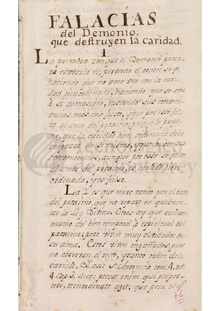
The Indigenous languages of the Americas are the languages that were used by the Indigenous peoples of the Americas before the arrival of non-Indigenous peoples. Over a thousand of these languages are still used today, while many more are now extinct. The Indigenous languages of the Americas are not all related to each other, instead they are classified into a hundred or so language families, as well as a number of extinct languages that are unclassified because of a lack of data.

The Hokan language family is a hypothetical grouping of a dozen small language families that were spoken mainly in California, Arizona and Baja California.

Penutian is a proposed grouping of language families that includes many Native American languages of western North America, predominantly spoken at one time in British Columbia, Washington, Oregon, and California. The existence of a Penutian stock or phylum has been the subject of debate among specialists. Even the unity of some of its component families has been disputed. Some of the problems in the comparative study of languages within the phylum are the result of their early extinction and limited documentation.

Comecrudan refers to a group of possibly related languages spoken in the southernmost part of Texas and in northern Mexico along the Rio Grande of which Comecrudo is the best known. These were spoken by the Comecrudo people. Very little is known about these languages or the people who spoke them. Knowledge of them primarily consists of word lists collected by European missionaries and explorers. All Comecrudan languages are extinct.
Comecrudo is an extinct Pakawan language of Mexico. The name Comecrudo is Spanish for "eat-raw"; Carrizo is Spanish for "reed". It was best recorded in a list of 148 words in 1829 by French botanist Jean Louis Berlandier. It was spoken on the lower Rio Grande near Reynosa, Tamaulipas, in Mexico. Comecrudo has often been considered a Coahuiltecan language although most linguists now consider the relationship between them unprovable due to the lack of information.
Garza is an extinct Pakawan language of Texas and Mexico. It is known from two tribal names and twenty-one words recorded from the chief of the Garza by Jean-Louis Berlandier in 1828. At that time, the Garza all spoke Spanish and were acculturated. The Garza may have been the same as the Atanguaypacam tribe recorded in 1748. The Garza were called something like Meacknan or Miákan by the neighboring Cotoname while they called the Cotoname Yué. Garza is Spanish for "heron."

Coahuilteco was one of the Pakawan languages that was spoken in southern Texas and northeastern Coahuila (Mexico). It is now extinct.

Chumashan was a family of languages that were spoken on the southern California coast by Native American Chumash people, from the Coastal plains and valleys of San Luis Obispo to Malibu, neighboring inland and Transverse Ranges valleys and canyons east to bordering the San Joaquin Valley, to three adjacent Channel Islands: San Miguel, Santa Rosa, and Santa Cruz.

Mission San Juan Capistrano was founded in 1731 by Spanish Catholics of the Franciscan Order, on the eastern banks of the San Antonio River in present-day San Antonio, Texas. The new settlement was named for a 15th-century theologian and warrior priest who resided in the Abruzzo region of Italy. The mission San Juan was named after Saint John of Capestrano.
Terrence Kaufman was an American linguist specializing in documentation of unwritten languages, lexicography, Mesoamerican historical linguistics and language contact phenomena. He was an emeritus professor of linguistics and anthropology at the University of Pittsburgh.

Quinigua is an extinct language that was spoken in northeastern Mexico. Quinigua was spoken between the Sierra Madre Oriental and the Sierra Tamaulipa la Nueva, and between the Rio Grande and the Rio del Pilón Grande. It has no apparent relatives and remains unclassified.
Margaret Langdon was a US linguist who studied and documented many languages of the American Southwest and California, including Kumeyaay, Northern Diegueño (Ipai), and Luiseño.
Cueva Ahumada is an archaeological site located within several canyons in the La Rinconada village, García Municipality, in the Nuevo León state, México. Cave painting in northeastern Mexico covers two types of artwork: rock engraving, also called petroglyphs. A third type of rock art, geoglyphs so far has not been detected in this region.

The Aranama were an Indigenous people who lived along the San Antonio and Guadalupe rivers of present-day Texas, near the Gulf Coast.
Aranama (Araname), also known as Tamique, is an extinct unclassified language of Texas, USA. It was spoken by the Aranama and Tamique peoples at the Franciscan mission of Espíritu Santo de Zúñiga. It is only known from a two-word phrase from a non-native speaker: himiána tsáyi 'give me water!'. Variations on the name are Taranames, Jaranames ~ Xaranames ~ Charinames, Chaimamé, Hanáma ~ Hanáme.

The Coahuiltecan were various small, autonomous bands of Native Americans who inhabited the Rio Grande valley in what is now northeastern Mexico and southern Texas. The various Coahuiltecan groups were hunter gatherers. First encountered by Europeans in the 16th century, their population declined due to European diseases, slavery, and numerous small-scale wars fought against the Spanish, criollo, Apache, and other Indigenous groups.

The Payaya people were Indigenous people whose territory encompassed the area of present-day San Antonio, Texas. The Payaya were a Coahuiltecan band and are the earliest recorded inhabitants of San Pedro Springs Park, the geographical area that became San Antonio.
The Pakawan languages were a small language family spoken in what is today northern Mexico and southern Texas. All Pakawan languages are today extinct.
The Pastia people were a hunter-gatherer tribe of the Coahuiltecan. The Pastias inhabited the area south of San Antonio, largely between the Medina and San Antonio Rivers and the southward bend of the Nueces River running through modern day La Salle and McMullen counties. They were first contacted by Spanish explorers in the early eighteenth century, and were extinct as an ethnic group by the middle of the following century.
The Tap Pilam Coahuiltecan Nation is a cultural heritage organization of individuals who identify as lineal descendants of the Coahuiltecan people. They have a nonprofit organization, the American Indians in Texas-Spanish Colonial Missions, based in San Antonio, Texas.












